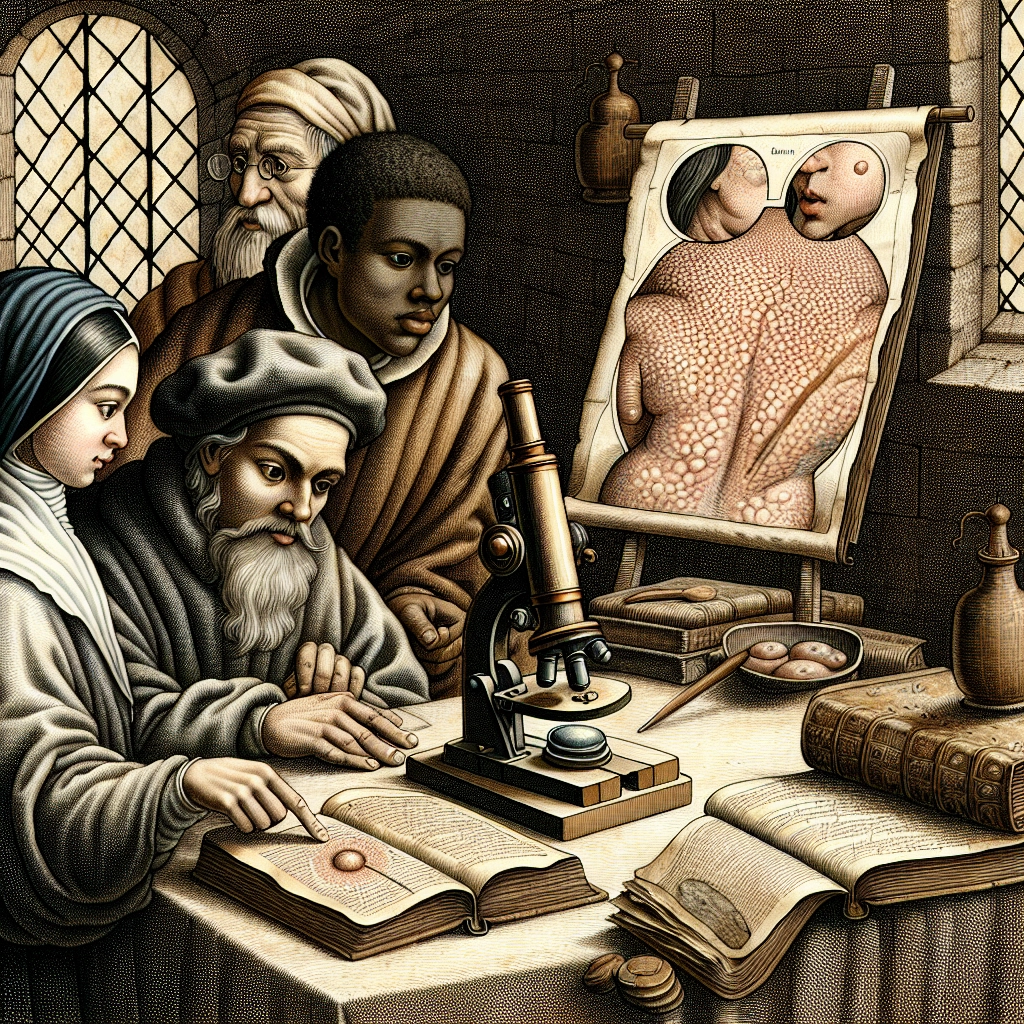
- Published on
- Authors

- Name
- ric de yuga 😄
🐔 The Curious Case of Goosebumps: Why Do We Get Them? 🐔
Goosebumps are a peculiar reaction of our skin to various stimuli, such as cold, fear, or emotional moments. This intriguing phenomenon raises the question: why do we get goosebumps? Let's delve into the science behind goosebumps, their evolutionary origins, and why we still experience them today.
🔬 The Science of Goosebumps 🔬
Goosebumps, also known as piloerection or horripilation, occur when tiny muscles at the base of hair follicles contract, causing the hairs to stand upright.
🧠 How Goosebumps Happen 🧠
🧬 The Mechanism:
- Arrector Pili Muscles: Small muscles called arrector pili are attached to each hair follicle. When these muscles contract, they pull the hair upright, resulting in the characteristic bumps on the skin.
- Nervous System Response: Goosebumps are triggered by the autonomic nervous system, which controls involuntary bodily functions. Specifically, the sympathetic nervous system activates the arrector pili muscles in response to certain stimuli.
🌍 Common Triggers:
- Cold: Exposure to cold temperatures is a common trigger for goosebumps. The body's attempt to generate warmth by trapping an insulating layer of air close to the skin causes the hairs to stand up.
- Emotions: Strong emotions such as fear, awe, or excitement can also induce goosebumps. This response is thought to be linked to the body's fight-or-flight mechanism.
- Music and Memories: Certain pieces of music or powerful memories can evoke emotional reactions that lead to goosebumps, often described as a "chill" down the spine.
🌍 The Evolutionary Origins of Goosebumps 🌍
Goosebumps are an evolutionary holdover from our ancestors, who had much more body hair.
📈 Evolutionary Purpose:
- Thermoregulation: For our fur-covered ancestors, the piloerection response helped to trap a layer of air close to the skin, providing additional insulation and helping to maintain body temperature in cold environments.
- Intimidation: Raising body hair made our ancestors appear larger and more intimidating to predators or rivals. This could have been advantageous in avoiding confrontations.
🦧 Modern Humans:
- Vestigial Response: In modern humans, with much less body hair, goosebumps no longer serve the same practical purposes. However, the physiological mechanism remains as a vestigial response.
- Psychological Impact: While the practical function may be diminished, the experience of goosebumps can still play a role in emotional and psychological responses, enhancing our sensory experiences.
🌟 The Fascination with Goosebumps 🌟
Goosebumps are not just a curious physiological response; they also have significant cultural and psychological implications.
🎵 Emotional Reactions:
- Music and Art: Goosebumps are often experienced during profound musical or artistic moments. This response is sometimes referred to as "frisson" and is associated with the release of dopamine, a neurotransmitter linked to pleasure and reward.
- Storytelling: Intense scenes in movies, books, or stories can evoke goosebumps, adding to the immersive experience and emotional impact.
💡 Scientific Study:
- Research: Scientists study goosebumps to understand the complex interplay between the nervous system, emotions, and physical reactions. This research can provide insights into human evolution, psychology, and physiology.
🌟 Embracing the Mystery of Goosebumps 🌟
Goosebumps are a remarkable reminder of our evolutionary past and the intricate connections between our bodies and minds. Whether triggered by cold, fear, or a beautiful piece of music, they offer a glimpse into the complex mechanisms that govern our reactions to the world around us.
Next time you experience goosebumps, take a moment to appreciate the fascinating science behind this common yet mysterious phenomenon. Let's celebrate the wonders of our bodies and the evolutionary stories they tell.
